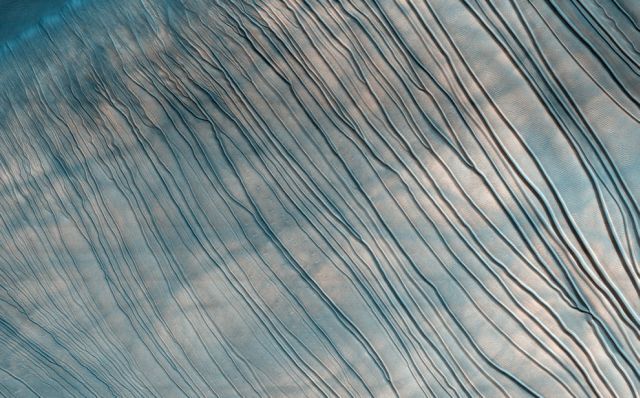|
|
Mars Surface
|
Because the orbit of Phobos is below synchronous altitude, the tidal forces from the planet Mars are gradually lowering its orbit. In about 50 million years it will either crash into Mars’ surface or break up into a ring structure around the planet.
The origin of the two moons is not well understood. Their low albedo and carbonaceous chondrite composition have been regarded as similar to asteroids, supporting the capture theory. The unstable orbit of Phobos would seem to point towards a relatively recent capture. But both have circular orbits, very near the equator, which is very unusual for captured objects and the required capture dynamics are complex. Accretion early in the history of Mars is also plausible but would not account for a composition resembling asteroids rather than Mars itself, if that is confirmed.
A third possibility is the involvement of a third body or some kind of impact disruption. More recent lines of evidence for Phobos having a highly porous interior and suggesting a composition containing mainly phyllosilicates and other minerals known from Mars, point toward an origin of Phobos from material ejected by an impact on Mars that reaccreted in Martian orbit, similar to the prevailing theory for the origin of Earth's moon. While the VNIR spectra of the moons of Mars resemble those of outer belt asteroids, the thermal infrared spectra of Phobos are reported to be inconsistent with chondrites of any class.
|
|









